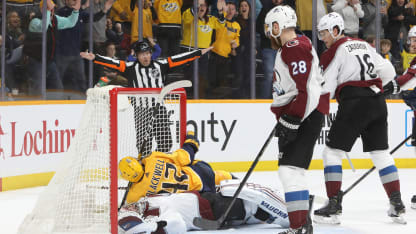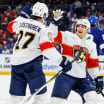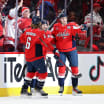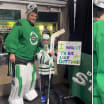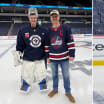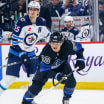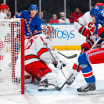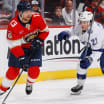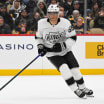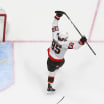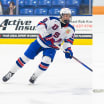"They're all very subtle changes but we feel they've helped the game," NHL senior executive vice president of hockey operations Colin Campbell said.
The punitive change to the coach's challenge rule has had the most obvious effect. The NHL made a failed challenge in any of the three categories (offside, goalie interference or missed stoppage in play, which is a new category this season) result in a two-minute penalty for delay of game.
It's clear that the fear of a penalty has caused a dramatic decrease in the number of challenges this season because there have been 133 coach's challenges through the 1,015 games played entering Monday, down from 222 last season, a 41-percent decrease.
The percentage of successful challenges has increased to 57 percent (77-for-133), up from 38 percent (84-for-222) last season.
"You can see that the overturned stats are still there in terms of offside and goaltender interference plays, but the number of total challenges is down significantly," NHL senior vice president and director of officiating supervision Stephen Walkom said. "We're looking at one challenge for every eight games."
The biggest drop has been in the goalie interference challenge: 54 this season, down from 141 last season.
"This is quite significant," Walkom said. "We don't have coaches going for interference challenges just for a long timeout anymore. That too may contribute to the game time reduction."
Games this season are taking on average two hours and 27 minutes, down three minutes per game from last season.
In addition, the officials, through the use of added video review this season, have been able to overturn four double-minor high sticking penalties that were a result of their own stick, a teammate's stick, the puck hitting the player in the face, or a legal follow-through.
"That was the goal of this exercise, to show if a double-minor high sticking wasn't warranted, that it was rescinded," Walkom said.
The number of non-fighting major penalties and match penalties are also down this season to 12 majors and two match penalties after being at 22 and five, respectively, last season. The newly implemented mandatory video review for officials on all non-fighting major and match penalties has made an impact with five majors being reduced to minors.
"Our objective of not overcalling the major or match penalties is being achieved," Walkom said.
Walkom also said he has seen players following the new rule regarding helmets that fall off during play. They are now required to either go to the bench when their helmet falls off or retrieve the helmet and make an effort to put it back on properly within a reasonable time period determined by the officials. Failure to follow the rule results in a minor penalty.
"We've had a few penalties called this year and we've encouraged the officials to engage with the players on the ice, to communicate with them and tell them to get to the bench," Walkom said. "The players have conformed to this rule quite well. We have many examples of players putting their helmets back on during play so they can stay on the ice and we have good examples of players leaving the ice immediately. We believe this change has had the desired effect and obviously it becomes more critical in the playoffs."
There is also an uptick in the number of face-offs in the end zones (69.5 percent, up from 68.0 percent last season) instead of the neutral zone, a result of a rule change that now makes the face-off take place in the offensive zone if the attacking team is responsible for the puck going out of play.
The winning percentage on the first face-off of a power play is 56.5 percent, up from 52.9 percent last season, a possible result of the attacking team now being able to choose which circle it wants the face-off to begin the power play.
"We thought we were going to have all sorts of problems with delays in the game, but the centerman and the linesman in game do this quite efficiently," Walkom said. "They pick the side, they pick the spot and it's hardly noticeable to the person watching the game."
